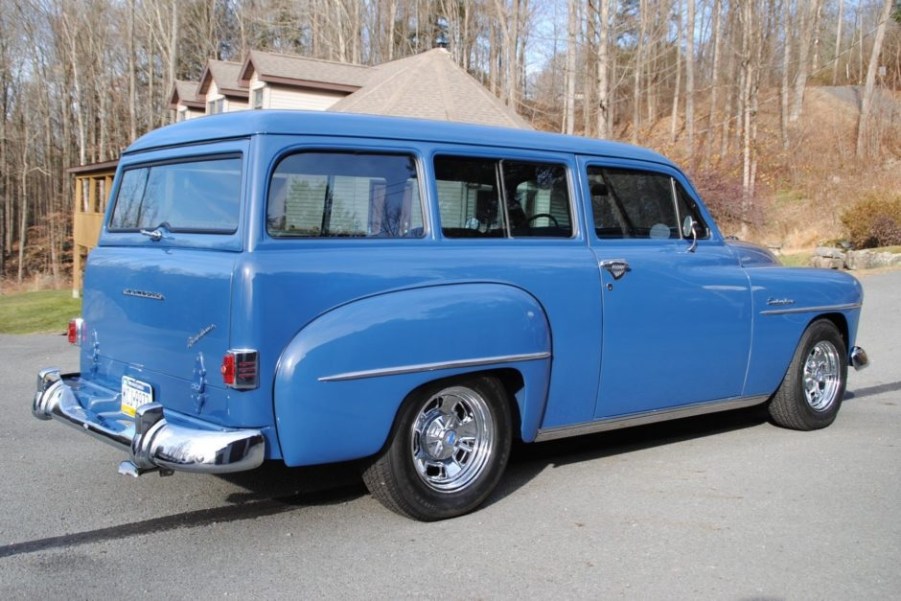
Chevrolet Wasn’t the Only One that Made a Suburban
Although the latest Chevrolet Suburban’s styling can be an acquired taste to some, there’s no doubt the SUV has staying power. In addition to the good safety rating and long list of standard features, the Suburban now comes with independent rear suspension. While the smaller Tahoe has higher Consumer Reports reliability scores, the Suburban holds the record for longest continually-produced nameplate. Chevrolet has been making the Suburban for 85 years—but it wasn’t the only company to ever make one.
The origins of the Chevrolet Suburban
According to Donut Media and Motor Trend, in the early 1930s, Chevrolet was supplying the National Guard and US Army with wagons built on half-ton pickup platforms. In 1935, the automaker started offering them to the general public, with two doors but seating for 8. That’s right: the Chevrolet Suburban was originally a station wagon.

As it is today, Chevrolet and GMC shared many platforms and products. One of these was the Suburban; starting in 1937, GMC had its own Suburban, albeit with a more powerful engine.

Chevrolet would continue supplying Suburban wagons to the military during WWII. After the war, soldiers starting families wanted roomy vehicles like the Suburbans they drove during deployment. At that point, Chevrolet and GMC released the third-gen Suburban, which would later inspire the Chevrolet HHR. Although, according to MT, the Chevrolet Suburban wouldn’t offer four-wheel drive until 1957.
But by the time the third-gen Chevrolet Suburban was out, it had a cross-town rival. And it was also a Suburban: a Plymouth Suburban.
The Plymouth Suburban

As Car and Driver explained, Chevrolet didn’t actually trademark the name “Suburban” when the vehicle first debuted. Which meant other manufacturers, such as Dodge, Nash, and DeSoto, reported Auto Influence, used it to refer to their own similarly-designed vehicles. Basically, “Suburban” was to cars what “Kleenex” or “Band-Aid” is to facial tissues and bandages. And, in 1949, Hagerty explained, Plymouth debuted its own Suburban.
At the time of the Plymouth Suburban’s debut, station wagons had begun fully changing over from wooden bodies to steel ones. Which may seem odd, considering the Chevy Suburban had an all-steel body since the first non-military model. But whereas the Chevy rode on a truck frame, the Plymouth Suburban rode on a passenger car frame, according to Curbside Classic.

Although that made it easier to drive, that made it less roomy—it could only seat 5, not 8. And fitting a third-row of seats was only possible on the most expensive trims, according to Hemmings. And if you did have a third row of seats, unlike with the Suburban, you had to remove the second and third rows to have any decent carrying capacity.
When did Chevrolet’s become the only one?

Plymouth eventually discontinued its Suburban in 1962. While the wagon featured the automaker’s largest body and best suspension, it was significantly more expensive than Chevrolet’s. Plymouth then revived the name for its Fury line of station wagons, but it was dropped again in 1978, according to Hagerty. GM didn’t officially trademark “Suburban” until 10 years later, according to Car and Driver.
Since then, through occasional missteps, the Chevrolet Suburban has soldiered on, as both a body-on-frame off-roader and family hauler.
Follow more updates from MotorBiscuit on our Facebook page.


